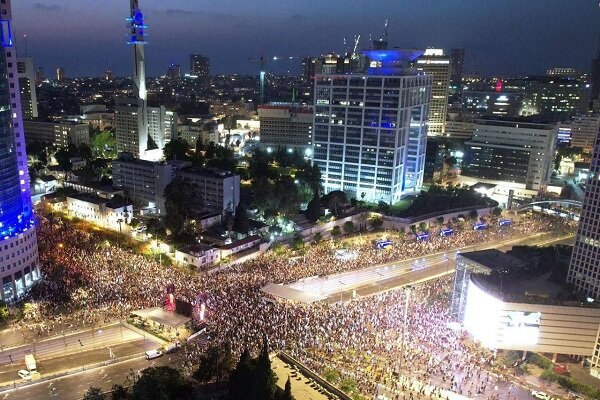Growing Unrest in Israel as Protesters Demand Ceasefire in Gaza Conflict
In a dramatic display of public dissent, protesters in Israel have called for an immediate ceasefire in the ongoing conflict with Hamas in Gaza. This comes as tensions continue to rise following the discovery of six Israeli captives’ bodies in Gaza.
On the streets of Tel Aviv and outside Prime Minister Benjamin Netanyahu’s office in West Jerusalem, thousands of Israelis chanted "Now! Now!" They implored their government to negotiate a ceasefire with the Palestinian group Hamas. The protesters emphasized their primary demand: bringing the remaining captives back home safely. According to Al-Jazeera, the demonstrations indicate a significant level of public frustration with the current Israeli leadership and its handling of the conflict.
These protests are part of a broader movement led by various civic groups, including Israel’s largest trade union, which has announced plans for a general strike on Monday. Such widespread action underscores the high stakes and increasing desperation among Israeli citizens who see their government as failing to protect its people.
The Conflict’s Toll
Since October 7, 2023, the Gaza Strip has come under relentless assault from Israeli forces, including airstrikes by fighter jets and artillery bombardments. According to reports, these attacks have resulted in the deaths of over 42,000 people and injuries to more than 94,000 others in Gaza. The enormity of these casualties has only intensified international calls for an end to the violence.
The heavy-handed military strategy aims to counteract Hamas, which has been launching rockets and conducting other forms of resistance against Israel. However, the humanitarian cost has been astronomical, leading to global condemnation and further calls for a ceasefire.
Context and Recent History
The Gaza conflict is not a recent phenomenon but the latest chapter in a protracted struggle between Israel and Palestinians. The roots of this enduring conflict trace back to the mid-20th century, following the establishment of the State of Israel in 1948 and subsequent wars and skirmishes over disputed territories. Gaza, specifically, has been a focal point of bloodshed and tension, especially since Hamas took control of the strip in 2007.
International negotiations and peace efforts have frequently fallen apart, often resulting in renewed violence. The most recent conflict saw a fragile ceasefire break down, leading to the escalation that began on October 7. This resurgence in violence has led to intense scrutiny of both sides, with human rights organizations documenting numerous violations and significant civilian suffering.
Public Sentiment and Government Accountability
The current protests in Israel underscore a growing divide between public sentiment and government policy. Citizens are increasingly vocal about their dissatisfaction, urging leaders to prioritize humanitarian concerns over military objectives. The death of Israeli captives adds to the urgency, with family members and activists placing the blame squarely on the shoulders of Prime Minister Netanyahu and his administration.
Looking Ahead
Both domestic and international pressures are mounting for a resolution to the Gaza conflict. Any potential ceasefire will require substantial negotiations and likely international mediation to ensure durability. While the immediate future remains uncertain, the fervor and determination of Israeli protesters suggest that public opinion could significantly influence governmental actions in the near term.
As events continue to unfold, the world watches closely, hoping for a breakthrough that could bring lasting peace to a region long marred by conflict.
For more information, please visit the official website of the Israeli Ministry of Foreign Affairs.
